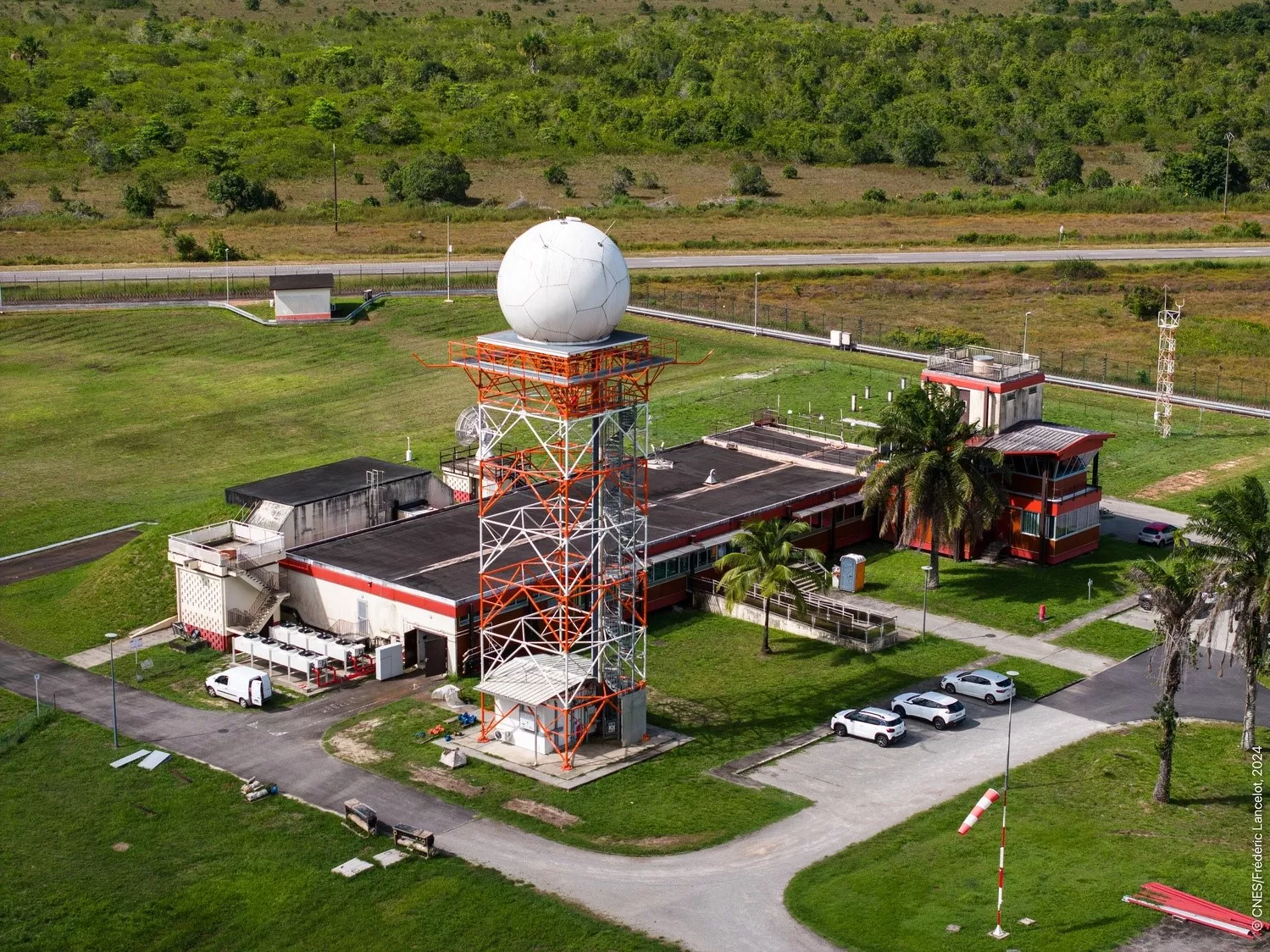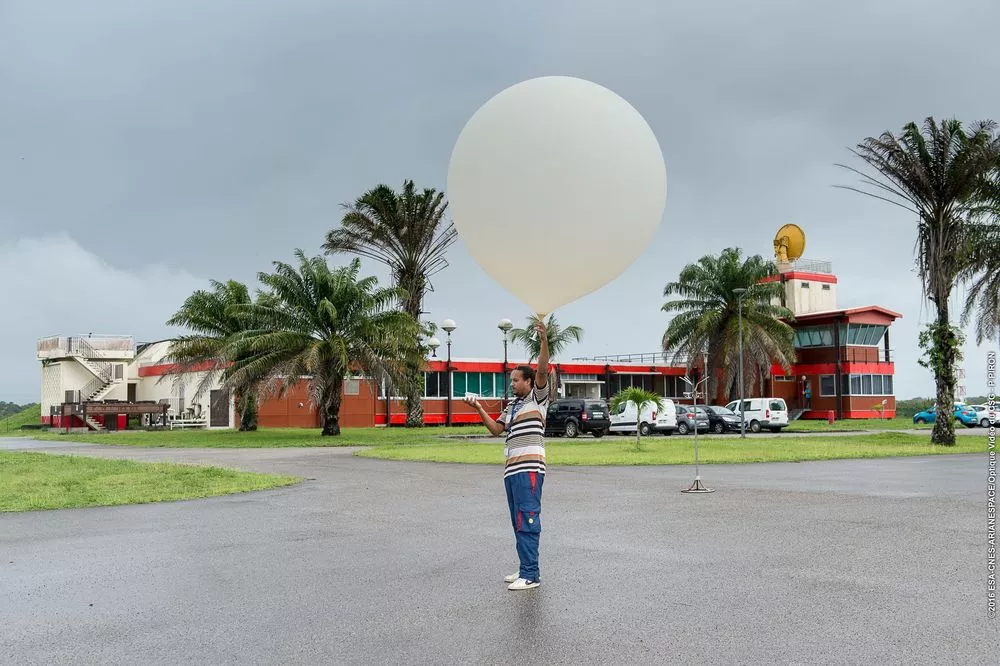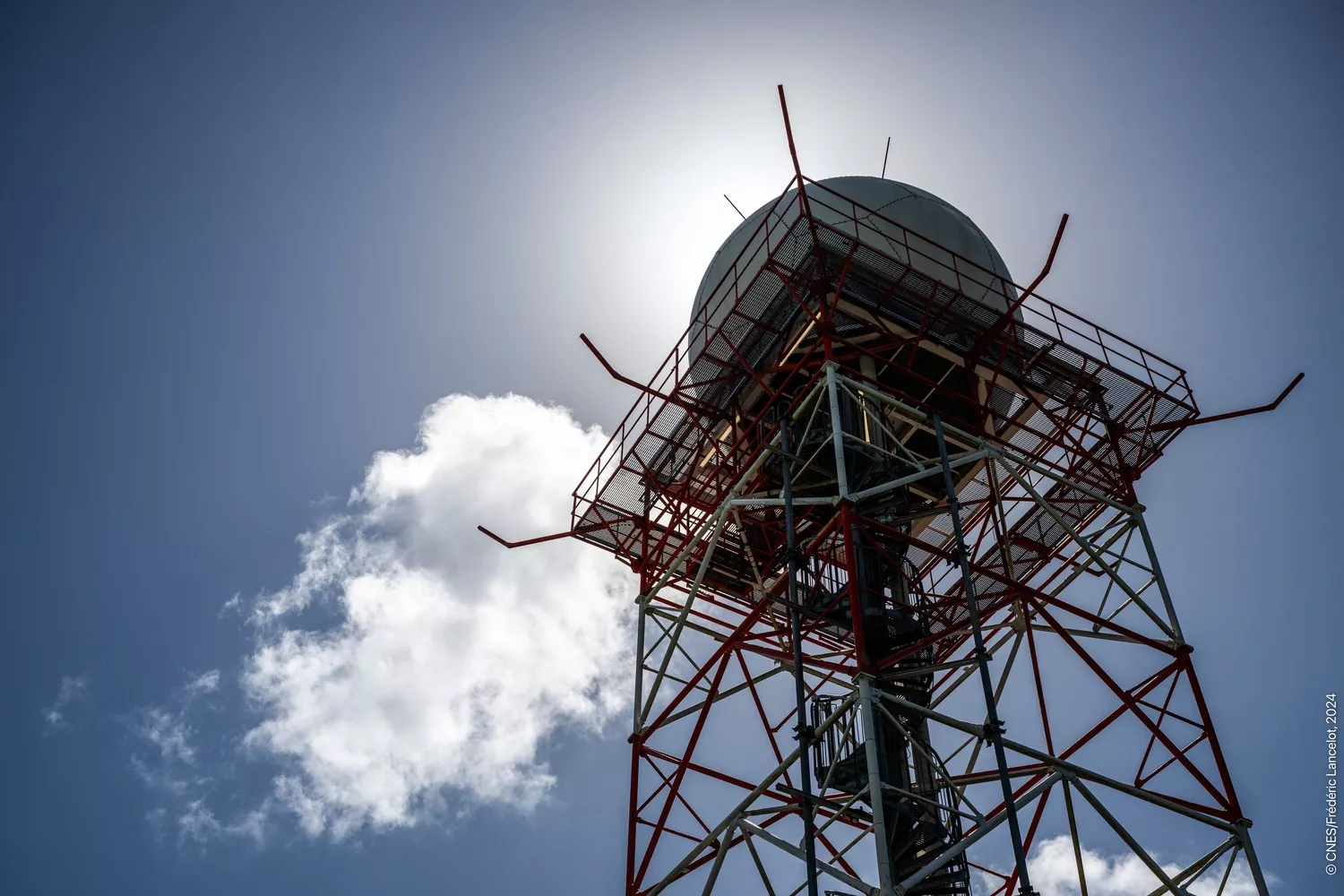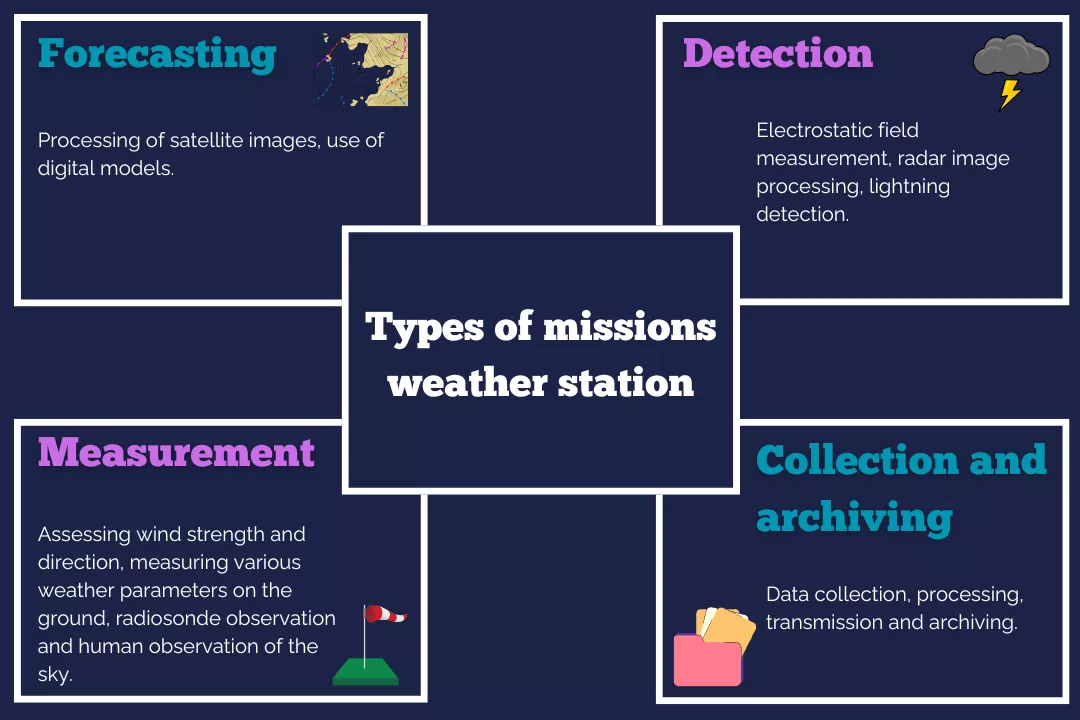The weather station
Launches are very much subject to meteorological constraints, with two main risks for the launcher: lightning strikes and wind. To anticipate these situations, Europe’s spaceport has had a weather station since it began operations in 1968.
Located 8 km from the Technical Centre, the weather station is entirely dedicated to the space base’s activities. Indispensable on both a day-to-day level and for operational activities, it provides forecasts of rain, wind, lightning and cloud masses, or any other weather phenomena that might impact activities.
The weather station was one of the first facilities at Europe’s spaceport: it has been in operation since 1968, the year of the maiden launch from the spaceport, and has played a major scientific role, including experiments carried out on board weather balloons, aircraft and then sounding rockets.

The weather station at Europe’s spaceport
Weather data essential for safety
The data provided by the spaceport’s weather station plays an important role in launch preparation operations on a daily basis. Poor weather conditions could make certain activities risky, such as satellite transport, the roll-out of launchers to the launch zone, operations involving hazardous materials or simply working at height. So the weather station teams are consulted before each of these operations: if the analyses carried out show that there is a risk, the operation is postponed.
During launches, the role of the weather service is even more critical: on D-1 before lift-off, the flight’s meteorological assistant prepares a “weather briefing” for the decision-makers at the space base, including the weather forecasts for the targeted lift-off time. On D-0, several weather briefings are again provided, up to 10 minutes before launch. If the safety criteria are not met, the weather assistant alerts the control centre: the launch sequence is suspended until conditions allow it to be resumed, otherwise the launch is postponed to a later date.
Just before an Ariane 6 lifts off, the weather team takes position in the weather station bunker. It makes its final forecasts and monitors the lift-off from this secure environment. For a Vega-C launch, where the launch pad is closer to the station, the team is sent to the “weather room” in the Vega-C control centre, at the Technical Centre, an hour and a half before launch.
Lightning and wind, two main criteria
Two meteorological parameters may bring a launch to a halt: the risk of lightning and strong winds, either on the ground or at higher altitudes.
Lightning represents a real danger, which would have an impact on the correct functioning of the launcher or satellite algorithm. Thus, the launch cannot take place if there are thunderstorm formations in the vicinity of the launch zone. The launch pad is also equipped with 4 anti-lightning rods to protect the launcher when it is exposed after the gantry has been retracted, as a precaution against any eventuality.
Strong winds at ground level would be detrimental to launcher control and could result in an incorrect trajectory on lift-off. Winds in coastal areas and upper winds can also lead to a launch being postponed. This is a preventive measure that is respectively due to the combustion products and the debris which, in the event of a launcher explosion, could be directed towards inhabited areas before being completely dispersed in the air.
Thus, if the direction and force of ground winds and upper winds is likely to result in combustion particles or debris falling outside the safe areas, the launch is postponed.

Titre brut
Balloon radiosonde observations
Weather station operators at Europe’s spaceport release radiosonde balloons to supplement the observations taken on the ground. These balloons rise to an altitude of up to 30 km, carrying a probe that measures parameters such as atmospheric pressure, temperature, wind and humidity.

Titre brut
The weather radars
Their names are Romuald and Roméo. These are the weather radars at Europe’s spaceport.
They work in much the same way as their cousins, tracking radars: a parabolic antenna generates electromagnetic pulses that bounce off the water droplets (the targets) and whose radiation is reflected back to the antenna. The computer does the rest, and after viewing the data, the operator analyses it until the last minute during a launch, authorising the lift-off or not.
The main roles of the weather station
